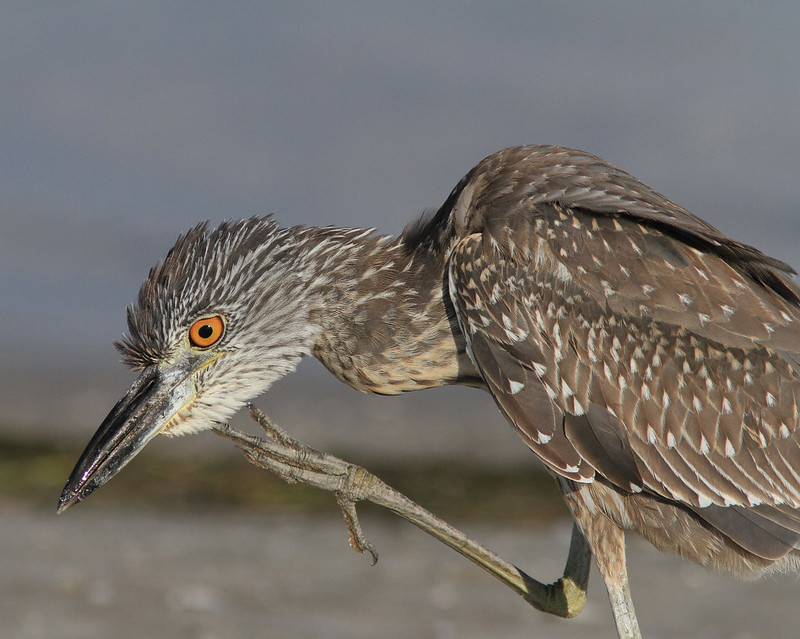 |
| Who am I? (Photo: Dan Irizarry) |
Night-herons are a group of waders named for their nocturnal hunting habits. There are seven extant species of night-heron, with two regularly occurring in the Americas: Black-crowned Night-Heron (Nycticorax nycticorax) and Yellow-crowned Night-Heron (Nyctanassa violacea).
While the Black-crowned has a global distribution (range map), the Yellow-crowned is restricted to the Americas (range map). In the USA, the Yellow-crowned is found mostly in the eastern half of the country, whereas the Black-crowned can be found in some part of every state except Alaska. Both species are prone to wandering outside their core range, especially during migration and post-breeding dispersal.
These two species are unmistakable as adults, but a little trickier to identify as juveniles. Luckily, even their silhouettes are distinctive. This article discusses how to differentiate the species by their proportions and shapes, then describes three categories of plumage you may encounter: adult, juvenile, and a variable "teen" plumage. We also touch on a few other species of herons that might be confused for a night-heron.
While the Black-crowned has a global distribution (range map), the Yellow-crowned is restricted to the Americas (range map). In the USA, the Yellow-crowned is found mostly in the eastern half of the country, whereas the Black-crowned can be found in some part of every state except Alaska. Both species are prone to wandering outside their core range, especially during migration and post-breeding dispersal.
These two species are unmistakable as adults, but a little trickier to identify as juveniles. Luckily, even their silhouettes are distinctive. This article discusses how to differentiate the species by their proportions and shapes, then describes three categories of plumage you may encounter: adult, juvenile, and a variable "teen" plumage. We also touch on a few other species of herons that might be confused for a night-heron.

